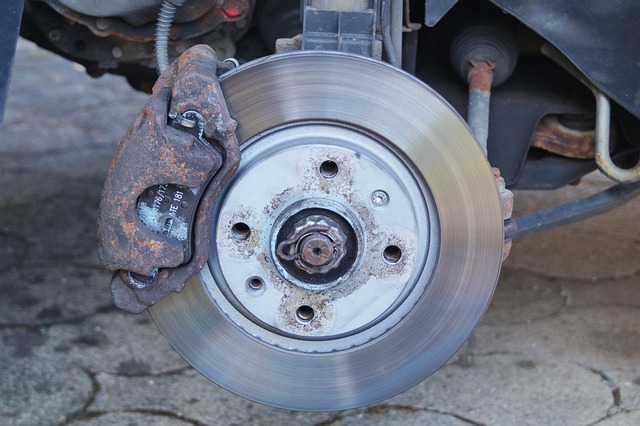Regular maintenance and inspections of commercial vehicle brake systems are crucial for safety. Understanding different brake types and conducting visual checks can detect wear or malfunctions early. Select Brake Systems offers high-quality replacement parts, while skilled technicians perform comprehensive tests to ensure optimal braking performance using advanced diagnostics.
Comprehensive brake inspections are essential for ensuring safe and reliable vehicle performance. This guide delves into the critical components of select brake systems, providing practical steps for conducting visual inspections. Learn how to test and diagnose brake performance, covering various techniques to identify issues promptly. By mastering these skills, you’ll enhance your vehicle’s safety and stability, giving you peace of mind on the road.
- Understanding Brake System Components
- How to Conduct a Visual Inspection
- Testing and Diagnosing Brake Performance
Understanding Brake System Components

Understanding Brake System Components is key to ensuring effective and safe commercial vehicle operation. Select Brake Systems vary widely in design and functionality, from traditional disc brakes to more advanced systems like drum brakes or anti-lock braking systems (ABS). Each component – including brake pads, rotors, calipers, master cylinders, and wheel cylinders – plays a crucial role in slowing and stopping the vehicle. Regular pre-driven car brake checks are essential for identifying potential issues such as unusual brake system noise, which can be an early indicator of wear or malfunction. Commercial vehicle brake servicing requires specialized knowledge to address these complex systems accurately, ensuring optimal performance and passenger safety.
How to Conduct a Visual Inspection

Conducting a visual inspection is a crucial step in identifying potential issues with your vehicle’s brake systems. Start by examining the brakes for any visible wear or damage. Look at the front and rear brake pads, rotors, calipers, and brake lines for signs of corrosion, cracks, or leaks. Select Brake Systems offers a wide range of high-quality car brake replacement parts online, ensuring you can easily access reliable options.
When performing a visual check, pay close attention to any uneven pad wear, which could indicate misalignment issues. Check the brake pads’ thickness; if they appear thin, it might be time for a front brake pad replacement tip. Reliable brands known for their most trustworthy brake parts include well-established manufacturers specializing in automotive safety components. Regular visual inspections, along with proper maintenance, can help extend the life of your brakes and ensure safe driving conditions.
Testing and Diagnosing Brake Performance

Comprehensive brake inspections involve rigorous testing and diagnosing to ensure optimal performance. This process begins with a thorough examination of select brake systems, focusing on key components like rotors, pads, calipers, and master cylinders. Skilled technicians utilize specialized tools to measure wear and tear, check for leaks, and assess overall functionality. Advanced diagnostic techniques allow them to pinpoint issues, whether it’s worn-out brake pads causing increased stopping distances or misaligned rotors leading to vibration.
By prioritizing these checks, vehicle owners can avoid costly repairs down the line. For instance, regular brake system inspections can reveal the need for rotor machining services to restore their smoothness and reduce brake dust, thereby enhancing overall braking efficiency. This proactive approach not only improves safety but also prevents unexpected breakdowns, making it an essential part of any maintenance routine.
Regular comprehensive brake inspections are essential for ensuring safe and reliable vehicle performance. By understanding the components of your brake system, conducting visual inspections, and testing brake performance, you can identify potential issues early on. When it comes to select brake systems, staying proactive through routine maintenance is key to preventing costly repairs and enhancing overall driving safety.
